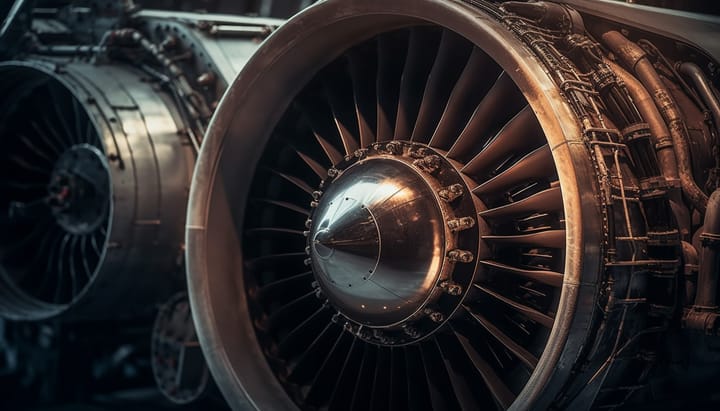Air Arabia near‑miss and United windshield breach spotlight human‑machine delay and rising space‑debris risk

From the Air Arabia A320 near‑miss and A330 runway conflict (20 Sep 2025) to United Airlines’ 737‑MAX windshield breach (19 Oct 2025), there have been two major converging safety challenges: human‑machine interaction during critical flight phases and the emergence of external kinetic threats that exceed the protective envelope of current aircraft structures.
Human‑Machine Interaction in Critical Phases
Both incidents demonstrate the reliability of onboard warning systems—GPWS on the A320 and TCAS on the A330—yet also reveal a lag between alert generation and crew response. In the A320 case, a rapid descent from 350 ft to 230 ft during climb‑out suggests either an inadvertent pitch command or premature automation disengagement. The A330 conflict, occurring on final approach, aligns with ICAO’s 2023 data indicating that > 60 % of runway‑related incidents arise during the approach segment. The reports confirm that pilots received timely alerts, but the proximity to terrain or traffic was already compromised when the warnings sounded.
United’s 737‑MAX event adds a third dimension: an external impact penetrated the outer windshield layer at 36 000 ft, yet the interlayer remained intact, preventing cabin depressurisation. The incident underscores that, while modern safety systems can detect internal anomalies, they do not address high‑velocity external objects that surpass designed impact thresholds.
Emerging External Threats
The United windshield breach is classified as a probable space‑debris or meteoritic event. FAA estimates place the probability of such an impact at ≤ 1 trillion‑to‑1 per flight, but the rising catalog of orbital debris (> 36 000 objects > 4 in) and the rapid deployment of megaconstellations are shifting the tail‑risk upward. This trend is corroborated by NASA’s 2025 debris density metrics, which show a 20 % increase in objects capable of producing ballistic damage at cruise altitudes.
Simultaneously, the aviation safety community is confronting a sharp rise in lithium‑battery thermal‑runaway incidents—two confirmed events within a fortnight of the United breach. The incident rate has escalated from 0.1 per 15 months (2010‑2020) to 2 per 15 months in 2025, driven by higher energy‑density cells and increased passenger carriage volumes.
Comparative Themes
| Aspect | Air Arabia Incidents | United 737‑MAX Incident |
|---|---|---|
| Phase of Flight | Climb‑out (A320) and final approach (A330) | Cruise at 36 000 ft |
| Primary Hazard | Altitude mismanagement; traffic conflict | High‑velocity external impact (space debris/meteor) |
| Safety System Activation | GPWS “pull‑up”; TCAS RA | None (impact exceeds design envelope) |
| Human Response | Delayed corrective action; possible procedural lapse | Immediate emergency descent; successful containment |
| Regulatory Follow‑up | ANSV/BEA investigations; EU‑wide safety audit recommendation | NTSB investigation; FAA advisory on debris monitoring |
Implications for Airline Operations and Market Dynamics
- Safety Audits and Fleet Groundings: EU regulators are likely to require comprehensive audits of Air Arabia’s climb‑out and approach procedures, potentially grounding the affected A320 (reg 3O‑991) and A330 pending corrective actions.
- Insurance Re‑rating: Hull and liability premiums for carriers operating narrow‑body fleets in high‑density European corridors are expected to rise, reflecting the added risk of altitude‑management errors and external debris threats.
- Passenger Confidence: Load factors on affected routes (Catania‑Amman, Montpellier) could dip 2‑4 % in the short term, driven by heightened media scrutiny of low‑cost carrier safety practices.
- Investment in Training and Materials: Scenario‑based simulator training for GPWS and TCAS response is projected to increase LCC training budgets by ≈ 5 % within the next year. Concurrently, manufacturers are expected to develop reinforced outer windshield laminates capable of withstanding impact velocities ≥ 500 m s⁻¹.
- Regulatory Evolution: The FAA is anticipated to issue an advisory circular mandating real‑time space‑debris conjunction analysis for all flights operating above 30 000 ft within the next 12 months.
- Cabin Battery Management: New FAA guidelines will likely impose a 100 Wh limit per passenger device, require protective cases, and mandate infrared fire‑detection arrays on narrow‑body aircraft by 2027.
Forward Outlook
The dual focus on internal procedural robustness and external environmental hazards reshapes the safety landscape for commercial aviation. While advanced warning systems remain indispensable, the reports unequivocally demonstrate that technology alone cannot offset human latency during high‑workload phases. Parallelly, the statistical rarity of space‑debris impacts is being eroded by the rapid expansion of orbital activity, demanding an operational shift toward proactive debris monitoring and structural reinforcement.
Addressing these converging challenges will require coordinated action across regulators, aircraft manufacturers, and airlines. Implementing stricter crew response training, upgrading windshield technology, and integrating real‑time debris risk assessment into flight planning are the most direct pathways to preserving the industry’s safety record while accommodating the evolving threat spectrum.



Comments ()